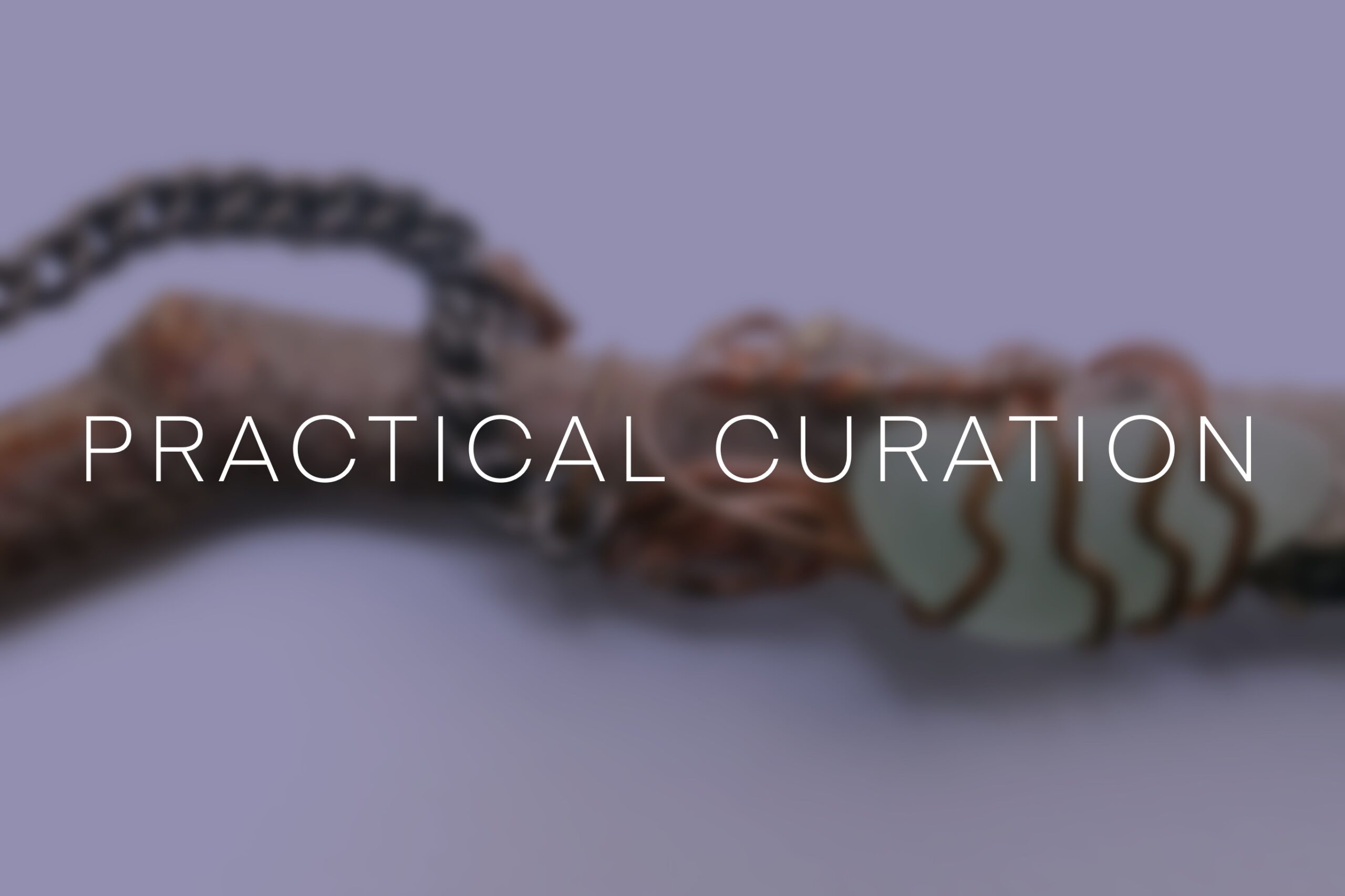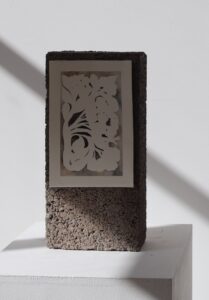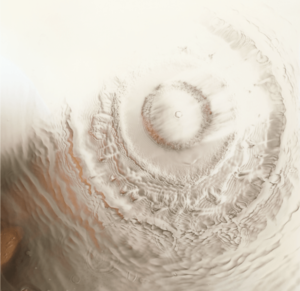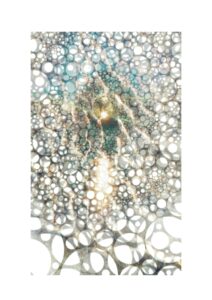Week10: Practical Research – Artists and Thematic Connection

Introduction.
With a broad theme of ‘Ecological Presents’ identified, I started to look for artists that I believe create work that embraces contemporary ecological time. Additionally, these are artists that I will need to contact to physically procure their work for physical display. Thus, on a limited budget and restricted time, the artists that I include will be limited to individuals who are in Edinburgh with the ability to transport their own work to the gallery space or artists whose work can be sent as a digital file, either for projection or printing. In this post I will analyze the work of three artists (including my own) through the lens of how they interact with ecological presents. I will then identify the artist’s work with three key words. I anticipate that this will assist me in establishing points of tension or harmony between artistic practices and illuminate themes that I will respond to, making a more specific curatorial framework to offer a greater degree of shape to ‘ecological presents’.
Artist 1: Layla Knox.
Layla Knox is an artist studying on the Contemporary Art Practice course at the University of Edinburgh, whom I met at the pop-up exhibition Corpse Flower at Inverleith House in the Royal Botanic Gardens. Here the work was site responsive to the history of the location, specifically the collection of plants gathered by Margret Haywood, who eventually donated her herbarium to the botanical garden. I took note of this from the lens of my individual speculative project themes as an artist who engages with the past of ecology. From this point I began to follow the work of Knox.
Recently at the contemporary art practice exhibition at Hospitalfield, Knox exhibited multiple pieces that progressed the previously displayed ecological themes. Woven Nettle (2025) consists of found, dried nettle stalks woven together with a green yarn. Knox creates a contrast between materials. The hard and brittle stems are wrapped in the soft and pliable yarn, arousing notions of comfort, as though the artist is offering sympathy and care to the materials that are looked over and left behind. Additionally, the watercolour paintings Chapel Painting I and Chapel Painting II are performed delicately; the detail suggests a certain reverence offered in the process, as though the artist is painting a portrait of the world, while the natural forms are depicted in the negative space of the paper, suggesting absence, possibly as a result of infrastructure and construction associated with the breezeblocks that these pieces find themselves mounted on. I find these pieces to be located explicitly in the present; the use of found objects in the weaving and crochet pieces creates contextual references to the outside world, while the use of breezeblocks and themes of absence in the watercolor pieces develop feelings of loss resulting from progressing industry.

Layla Knox, Chapel Painting I, Doily, Lichen, Chapel Painting II, Nettle Weaving (2025), sourced from: https://www.instagram.com/p/DHa6bppoSkL/?img_index=1

Layla Knox, Chapel Painting II (2025) Watercolour painting mounted on Breezeblock, image provided courtesy of the artist.
The key words that I associate with this practice are
· Care
· Nurture
· Absence
Artist 2: Romy Antrobus.
Romy Antrobus is an artist located in Hertfordshire who explores themes of interconnectedness through non-traditional darkroom photography. Antrobus is an artist that I had originally investigated as part of the section dedicated to ecological presents in my individual speculative project. Though I believe that performance pieces have a greater precedent in activating the viewer in embodied ways, I wanted to include this work within this test exhibition space to explore its capability to situate and engage an audience and reach a conclusion as to what non-performance pieces can offer to the ‘present’ of my speculative ‘Weird Frictions’ project.
Antrobus’s process is situated in the darkroom; using light and running water. She captures fleeting and ephemeral patterns defined from events that, though they occur in a controlled environment, result in unpredictable outcomes. The resulting imagery Antrobus located within Karan Barad’s concept of space-time mattering, where each current event or action is recognized as a culmination of infinite unseen prior happenings, which in turn affects every subsequent happening. Beyond the process, the generated imagery enforces this perception, ripples extending from one point or interaction to affect far-away surfaces in unseen and unknowable ways. I believe that this work can take on an interesting role within an ecological narrative, despite not being ecologically focused in its own right. The audience is asked to look to both the past happenings that have led us to the point of ecological crisis and the future that the ripples of the present effect, emphasizing the importance of actions in the present. Additionally, climate activism is challenged by the statistical significance of our individual actions; thus, challenging the scale of our behaviour with regard to how actions create ripples spanning to the future would be an effective way of suggesting a reappraisal of climate to the perception of the viewer. By combining these concepts with the work of Layla Knox, the audience can perceive the role of nurturing and care as present-day actions that affect the future.

Romy Antrobus, Open field I (2024), Photograph, Sourced from: https://sdcashow2024.lboro.ac.uk/student/romy-antrobus/

Romy Antrobus, Whispered I (2024), Photograph, Sourced from: https://sdcashow2024.lboro.ac.uk/student/romy-antrobus/
The key words that I associate with this practice are
· Relational
· Material
· Interconnected
Artist 3: Harry Mayston (me)
After looking at the two previous artists, I noticed elements that reminded me of my own artistic practice. I focus on themes of destruction and mending within my process. Centering around partially destroying images, I manipulate images using a rotary blade to remove small circular shapes in varying patterns, inspired by lichen growth, from the paper surface. I then repeat this process in varying patterns on multiples of the same image. Once completed, I layer the sheets on top of one another; each removed section from a surface reveals the image below. The result is a phenomenon where the viewer can only see the original image in its entirety through the lens of destruction. The intention of these pieces is to bring awareness to ecological destruction and highlight the forms of landscape that are being destroyed. However, the use of the lichen pattern is intended to represent symbols of resilience and a symbiotic coming together.
I have found synthesis with the work of Layla Knox. In my piece Blue Things, instead of letting the damaging process conclude a piece, I have employed traditional darning techniques to bring forth themes of mending and care. Both Knox’s Nettle Weaving and my Blue Things share material qualities of thread alongside thematic synthesis. Finally, many of my pieces use images of light interacting with water. My work and Antrobus’s are visually cohesive and may offer a more unified gallery experience but also may result in a blending of meaning where, for a viewer, Antrobus’s work may gain a greater attention to the role of water as a naturally occurring substance, where my pieces may inherit an association with actions and consequences; by placing these pieces in conjunction, new forms of knowledge will be allowed to emerge.

Harry Mayston, Hollows I (2024), Photograph, Tracing Paper, Collage, Image Photographed by Harry Mayston (05/04/2025)

Harry Mayston, Heirophany (2025), Photograph, Tracing Paper, Collage, Image Photographed by Harry Mayston (05/04/2025)
The key words that I associate with this practice are
· Mending
· Destruction
· Fragility
Application to Speculative Individual Project
All the pieces and practices that I have discussed in this post can be applied and included in my Weird Frictions speculative project. Additionally, I have found that, though aesthetic visual analysis has been something that I have ethically steered away from, the process of analyzing the above practices for their visual content has been valuable in considering how an audience would perceive an art piece. By simplifying the artist’s work into three distinct keywords, it was also easier to map the connections between the different themes and contexts. I will incorporate both techniques when developing the exhibition narrative and design within Weird Frictions.



